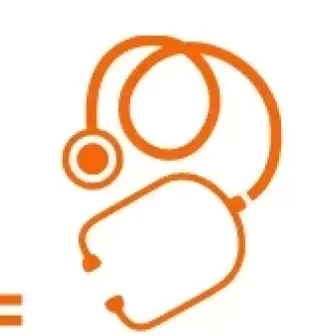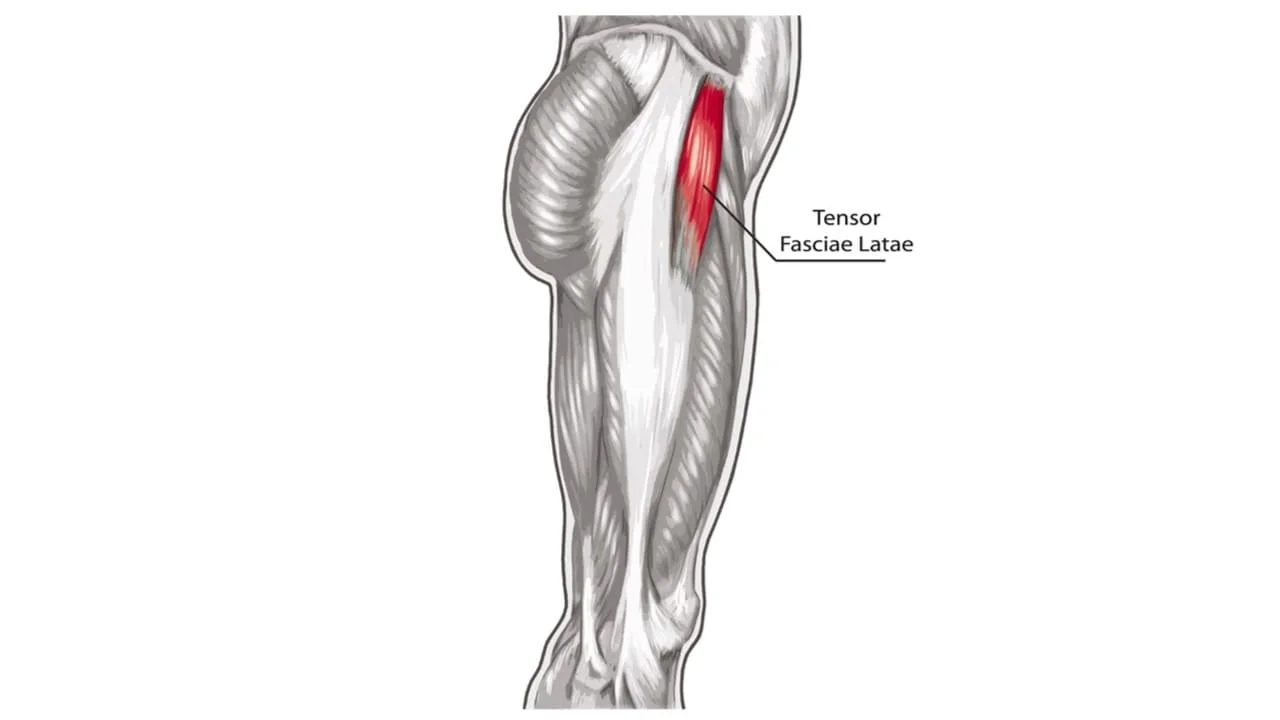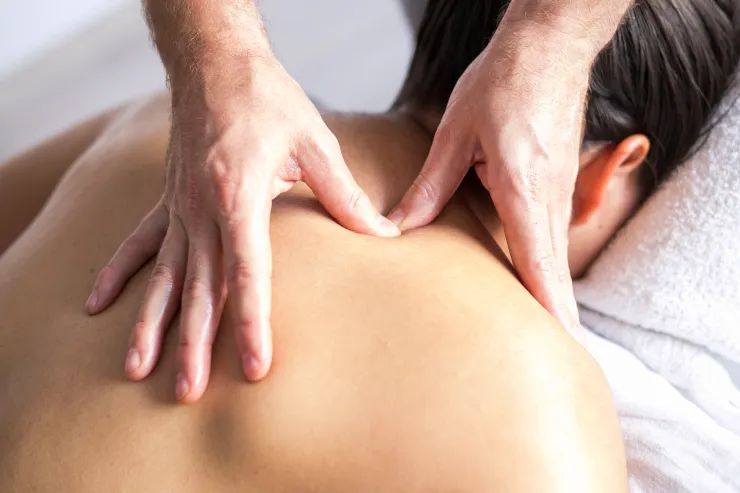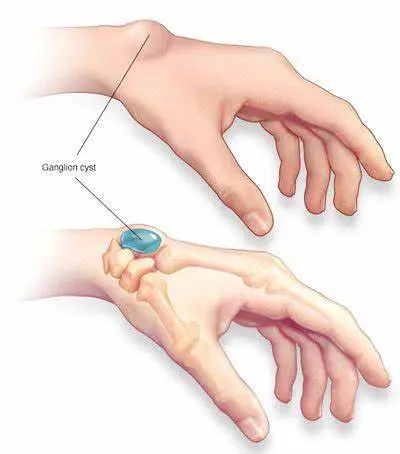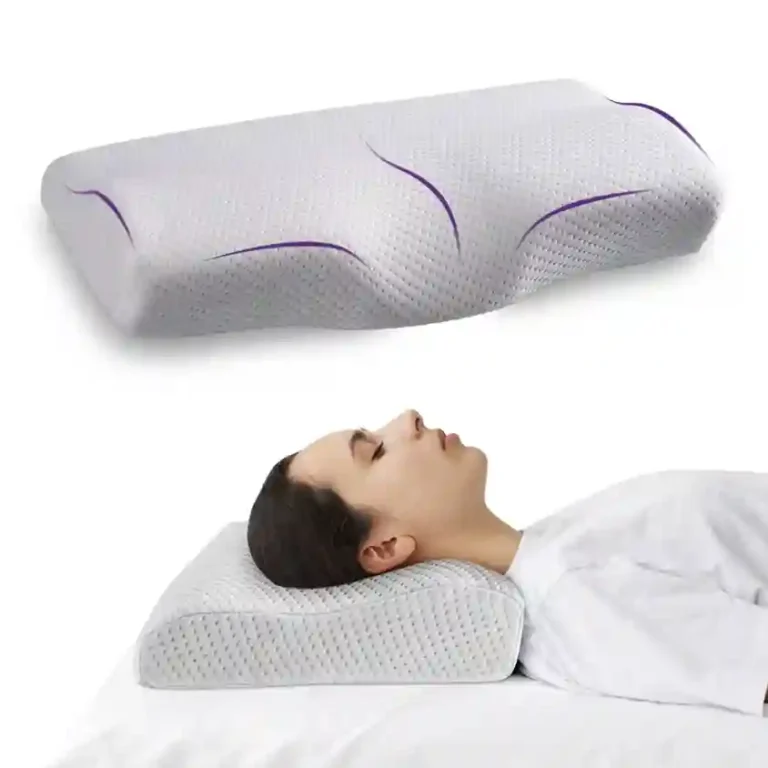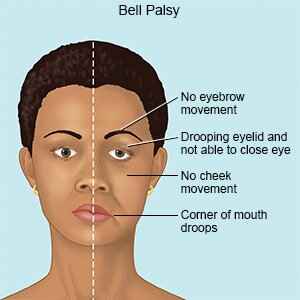Tensor Fascia Latae Muscle Pain
The Tensor Fascia Latae (TFL) is a small muscle located on the outer hip, playing a key role in hip stability, movement, and knee support. Pain in the TFL can result from overuse, poor biomechanics, or muscle imbalances, often leading to discomfort in the hip, thigh, or knee.
Common causes include excessive running, prolonged sitting, or improper posture. Treatment typically involves stretching, strengthening, and myofascial release techniques to relieve tension and restore function.
What is the Tensor Fascia Latae muscle pain?
- A little muscle on the outside and top of the hip joint is called the Tensor Fascia Latae.
- Tightness and soreness in the muscle cause Tensor Fascia Latae pain, primarily affecting runners.
- Numerous conditions, including hip osteoarthritis and knock knee (valgus) posture, might induce this Tensor Fascia Latae pain.
- The hip joint and the anterolateral part of the thigh, which reaches as far as the knee joint, are the locations of tensor fasciae latae pain trigger points.
- Walking or lying down on the affected side exacerbates this pain, which manifests as deep hip pain.
- Stretching, strengthening, and exercise, together with the RICE concept, help to relieve this pain.
Anatomy of the Tensor Fascia Latae muscle?
Situated in the lateral part of the thigh, the Tensor fasciae latae muscle is a fusiform muscle.
A little muscle located on the exterior of the hip joint is called the Tensor Fascia Latae.
Together with the gluteus medius, gluteus maximus, and gluteus minimus, this muscle is a member of the gluteal area.
In the anterolateral side of the thigh, which extends from the anterior part of the iliac crest to the superior part of the tibia bone, where it inserts through the iliotibial tract, the tensor fasciae latae muscle is superficial.
The Tensor Fascia Latae muscle’s primary job is to generate the leg’s external rotation, or extension and lateral rotation, at the knee joint. Furthermore, the thigh also influences the hip joint’s movements by functioning as a comparatively weak abductor and medial rotator-internal rotator.
Cause of the Tensor Fascia Latae muscle?
- Tensor fascia is the primary source of TFL pain. Overuse of the muscle causes latae muscular pain.
- This pain is also a result of compensating for the leg’s weaker surrounding muscles.
- Overuse of the TFL muscles is suggested and can lead to muscle pain when they are compensated with another muscle and are used excessively.
- This muscle compensation happens when the surrounding muscles malfunction as a result of inhibition or muscle weakening.
- When the hip joint is flexed to 90 degrees or more, the patient finds it difficult to sit for extended periods.
- Tightness in the IT band causes the Tensor fasciae latae to tighten, which in turn causes pain in the patient.
- When the Tensor Fascia Latae muscle becomes tight, it results in pelvic and iliac dysfunction.
The following circumstances also cause the TFL Tensor Fascia Latae muscle to become overworked:
- Running and walking exercises
- Swimming and cycling
- If the patient has a swayed back while standing
- The patient crosses their legs while meditating.
- If excessively wearing high heels
- when the patient spends a lot of time sitting, driving, or kicking.
- If the patient sleeps in the position of a fetus
Symptoms of the Tensor Fascia Latae muscle Pain?
- The patient feels Pain in the outside thigh, and outer hip joint, and when lying on the hip joint that is affected.
- When the patient bears weight on one side, this pain is exacerbated.
- Walking swiftly is difficult.
- Lying on the affected side causes the patient difficulty.
- With the hip joint bent to 90 degrees or more, the patient finds it difficult to sit for extended periods.
- The Tensor Fascia Latae muscle also contains the place in the patient’s sore.
- Due to misuse of the muscle, the patient also exhibits muscle spasms.
- The patient experiences weakness in the affected leg.
Which conditions frequently relate to Tensor Fascia Latae (TFL) pain?
- when the individual has TFL Tensor Fascia Latae, which can occasionally develop on the side of the hip that has osteoarthritis.
- This happens because of the Tensor Fascia Latae muscle’s altered biomechanics, which put undue pressure and stress on the hip joint’s structural components.
- Osteoarthritis develops as a result of the early onset of hip joint degradation and inflammation caused by this muscle stress and strain.
Tension & tightness:
- The tense and tight compensatory muscles are frequently linked to this muscle soreness.
- The brain’s elevated alert is the cause of these muscles’ tension and rigidity.
- Muscle tone is increased and it feels as though the muscle cannot fully stretch when it is always on high alert and ready to go into action.
- The muscle will become chronically tight and shortened if it stays in this posture for an extended period because it cannot relax and recover from the tension.
- TFL tightness can result from a variety of positions and movements if the patient has poor posture.
Knock knee (valgus) posture:
- A condition known as the knock knees posture occurs when one or both knees become excessively internally rotated due to the TFL muscle soreness and tightness, which is occasionally caused by the internal rotator of the hip joint turning the leg inward from the hip joint.
Anterior pelvic tilt:
- Muscle soreness with an anterior pelvic tilt is caused by tightness in the Tensor Fascia Latae, which results in another posture.
- Because the TFL muscle performs the hip flexion movement, Tensor Fascia Latae muscle soreness may be the reason for this aberrant posture.
- The anterior pelvic tilt is caused by the TFL muscle’s stiffness dragging the front of the pelvis, where it originates, downward, anchoring the legs when standing.
- However, when unilateral TFL muscle stiffness occurs on one side, it pulls that side of the pelvis downward, causing the pelvis to drop to one side.
Treatment of the Tensor Fascia Latae muscle pain?
Trigger Point Release:
- Applying forceful pressure to a trigger point a hyperirritable area or taut band is a key component of trigger point therapy. By reducing the blood supply to this location and the pressure felt, this pressure helps to relieve the tension in the muscle.
- Blood returns to the area and removes any toxins the muscle has released when the pressure is relieved.
- In a matter of seconds, these sites are frequently released, causing agony to radiate to other areas of the body.
Dry Needling:
- Using individually packaged, sterile acupuncture needles, a soft tissue occupational therapist applies the needle directly to the trigger point, causing a transient reaction in the muscle that swiftly subsides and permits the muscle to relax.
- The manipulative therapy known as myofascial release aims to relieve fascial tension caused by inflammation, trauma, and bad posture.
- The body’s muscles, bones, nerves, and organs are encased in these connective tissues known as fascia.
- points where the fascia is restricted, putting a lot of strain on the muscles and nerves and resulting in persistent pain.
- Long stretching strokes are used by a soft tissue occupational therapist to improve joint range of motion (ROM) and reduce pain by balancing tissue and muscle mechanics.
Heat:
- Using a heat pack to apply heat to the sore Tensor Fascia Latae muscle helps reduce the pain. Heat is a cheap and efficient way to relieve pain because it relaxes muscles, increases blood flow to the area, and improves range of motion and flexibility.
- By improving blood flow and circulation in the region, tensor fascia lata muscle pain symptoms can be lessened and healing properties can be supplied to the muscles.
Physical Therapy Treatment for the tensor fascia lata muscle?
Stretching and exercise are part of the physical therapy regimen to lessen tensor fascia lata muscle pain.
Stretching for the tensor fascia lata muscle:
- The easiest way to relieve tensor fascia muscle pain is to avoid activities that aggravate it.
- Stretching, strengthening, and gentle exercise are crucial for reducing pain and hastening the healing process.
- Stretching gently eases the pain of the tensor fascia muscles by promoting blood flow and circulation to the tissues, which lessens muscle stiffness and spasms.
- To lessen the strain and demands on the tensor fascia lata muscle and, consequently, the pain associated with it, it is crucial to address the hip joint’s muscular imbalances and increase its strength.
- TFL stork standing stretch
- Outer hip stretch
- foam roller to stretch
- Static standing TFL stretch
- Quadruped active TFL stretch
TFL stork standing stretch:
- To support their body, the patient stands next to the wall and rests their hand against it.
- Next, To be in a stork standing position, lift the leg nearest the wall, bend the knee joint, and put it on the right side of the other leg, above the knee joint.
- The tensor fascia lata muscle on the other hand should be placed over the stretching area.
- Then slowly bend them toward the wall while standing on one leg.
- Bend the torso while keeping the leg motionless.
- Over the tensor fascia lata muscle, the patient experiences the tension force.
- For 30 seconds, maintain this posture.
Outer hip stretch:
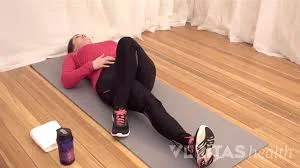
- The patient is lying on his back on the floor.
- Over the right knee joint, cross the left foot.
- The left knee must remain bent.
- Next, push and pull the left knee across the body using the right hand.
- Maintaining the left shoulder on the floor is crucial.
- For ten to twenty seconds, maintain this stretching position.
Foam roller to stretch:
- The foam roller is positioned on the upper lateral aspect of the thigh at the level of the side pocket, one inch below the anterior iliac crest, while the patient lies down on the right or left side.
- Next, position the other leg in front of the right.
- Use the elbow on the floor to support the body.
- After that, begin carefully moving up and down on the foam roller for 5 to 10 seconds from the level of the anterior iliac crest to the upper third of the thigh.
- For ten to twenty seconds, maintain this stretching position.
Static standing TFL stretch:
- To stretch, the patient is standing.
- The patient is in a staggered stance when standing, with the foot behind them pointing outward and the hip joint rotated at a 45-degree angle.
- Next, push the patient’s weight forward by contracting their glutes until they experience a stretch.
- Using the arm on the affected side, reach up and back.
- Maintain this posture for 30 seconds.
- Do this three times in a row, three times a day.
Quadruped active TFL stretch:
- The patient is lowering himself to the ground, knees beneath the hip joint, and hands stacked beneath the shoulders.
- Next, extend one leg behind the gluteal muscle contraction.
- Toes are out at a 45-degree angle and the hip joint is externally rotated.
- Surely Maintain a neutral spine and adduct the hip joint.
- Maintain this posture for a maximum of 30 seconds.
- Do this three times in a row, three times a day.
Exercise for the TFL muscle pain:
- Clamshell exercise with bands
- Sidesteps with bands
- Quadruped hip extension
- Quadruped hip extension with bent knee
- Single glute bridge
Clamshell exercise with bands:
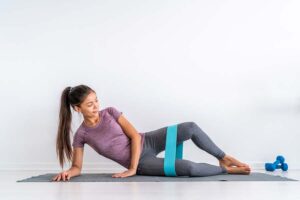
- The patient is lying sideways with knees bent at a 45-degree angle and both legs together.
- Place your head on your lower arm.
- Raise the patient’s upper leg as high as they can while keeping their feet together.
- The patient is then given a brief respite at the peak.
- Return to the starting position gradually after that.
- Perform three sets a day with ten repetitions on each side.
Sidesteps with bands:
- The patient is standing in an athletic position with their feet hip-width apart, leaning forward, and their knees slightly bent.
- Make sure your feet are a little wider than shoulder-width apart by taking a sidestep.
- Approach the first foot with the other foot.
- On the opposite side, repeat this practice.
- Perform three sets a day with ten repetitions on each side.
Quadruped hip extension with bands:
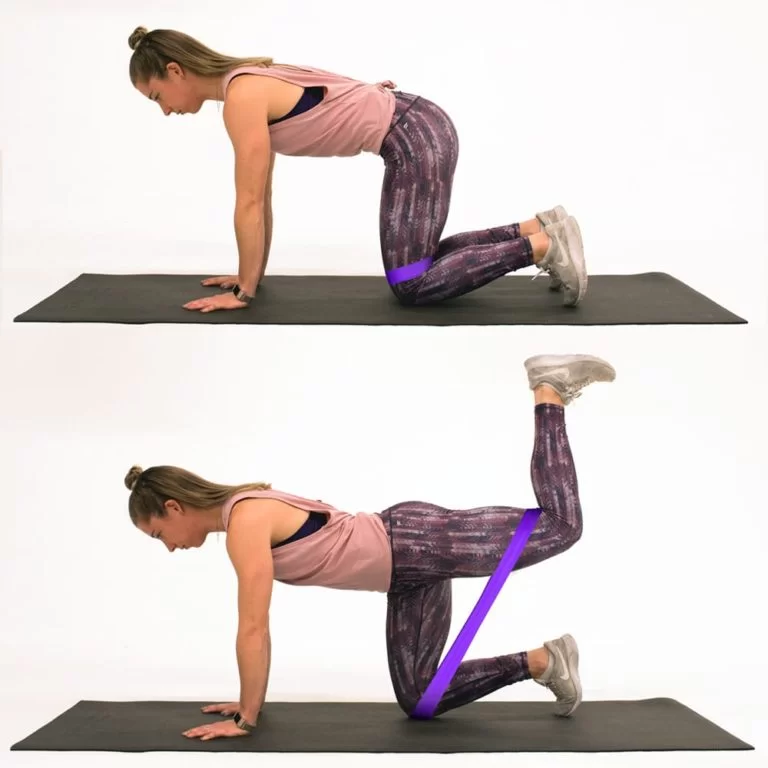
- The patient is placing the knees beneath the hip joint and the hands beneath the shoulders when you get on the floor.
- maintaining a straight spine and using the core muscles.
- To fully stretch one leg, press it up and back behind.
- Next, Return to the starting position gradually.
- On the opposite side, repeat this practice.
- Perform three sets a day with ten repetitions on each side.
Quadruped hip extension with bent knee:
- The patient is placing the knees beneath the hip joint and the hands beneath the shoulders when you get on the floor.
- maintaining a straight spine and using the core muscles.
- Maintaining a 90-degree bend in the knee joint, press one leg back behind you.
- Then slowly go back to where you were before.
- On the opposite side, repeat this practice.
- Perform three sets a day with ten repetitions on each side.
Single glute bridge:
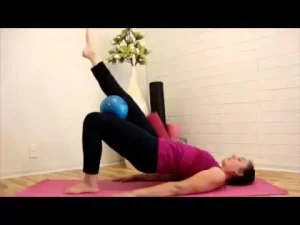
- The patient is lying on his back with his arms by his sides for support, his knees bent, and his feet flat on the ground.
- Next, extend one leg in front of the patient by lifting it off the ground.
- It is necessary to engage the glute muscles and maintain the upper back on the floor.
- Push through the foot’s heel on the ground.
- Hips and shoulders are formed in a straight line by lifting the hips off the ground until they reach the knee.
- Maintain an active core throughout, pause for one to two seconds at the top, and then go back to the beginning position.
- On the opposite side, repeat this practice.
- Perform three sets a day with ten repetitions on each side.
FAQs
What is the TFL pain test?
Tensor Fasciae Latae (TFL) and iliotibial band (ITB) tightness, contraction, or inflammation are assessed by Ober’s test. Other tests that are frequently used to identify iliotibial band syndrome include the Renne test and Noble’s test.
How can someone with TFL pain sleep?
In a similar vein, sleeping on the other side without a pillow beneath the knee will cause static compression by pulling the TFL/ITB against the greater trochanter. Try sleeping on your back as a solution. Place a pillow between your knees to lessen the strain on your upper hip if you can’t avoid side laying.
Why are TFL strikes occurring?
Travel on the London Underground has been disrupted by industrial action organized by the National Union of Rail, Maritime and Transport Workers (RMT), ASLEF, and other unions in response to disputes over job reductions, pensions, pay, safety, and other issues. The London Underground has been described as “one of Britain’s most strike-prone industries.”
Under the TFL, which nerve is it?
The superior gluteal nerve, L5, and S1 innervate the tensor fasciae latae. The greater sciatic foramen, which is located above the piriformis, is where the superior gluteal nerve leaves the pelvis at the sources of the anterior rami of the L4, L5, and S1 nerves. Additionally, the nerve runs between the gluteus medius and minimus.
Which exercise is effective for the TFL?
Exercise for Internal Hip Rotation
Focus on engaging the TFL muscle on the outside of your hip as you slowly raise your foot behind you while twisting your knee inward. To activate the muscle, hold the position for one to two seconds. Return your knee to its starting position slowly.
What is the process for TfL?
Numerous laryngeal procedures, including the injection of botulinum toxin to treat spasmodic dysphonia, vocal fold augmentation, laser manipulations to treat laryngeal dysplasia and papillomatosis, and the removal of benign vocal cords, have been guided by transnasal fiberoptic laryngoscopy (TFL).
Can TFL pain be caused by weak glutes?
Improve Weak Glutes and Get Rid of Hip Pain and Stiffness
TFL soreness, trochanteric bursitis, lateral meniscus problems, patellar tracking issues, and other ailments might result from a weak gluteus medius. Let’s first review some important information before moving on to workouts that can strengthen the gluteus medius.
How can my TFL be loosened?
Place yourself on your back. Cross the opposing foot over the leg at tibia level while maintaining one leg straight. You should feel a stretch on the outside of the straight leg after gradually pulling it inward with the foot. For the suggested amount of time, hold the stretch.
How much time does TFL take to recover?
The TFL can breathe again and the pain will go away as soon as you identify the underlying reason for the TFL overload and begin activating the appropriate muscles. To prevent the pain from returning, it will take four to six weeks to finish the four R’s.
Which nerve regulates the TFL?
superior gluteal nerve
The superior gluteal nerve, L4, L5, and S1 innervate the TFL. The anterior rami of L4-S1 produces the superior gluteal nerve, which travels along with the superior gluteal artery and vein, passes over the piriformis, and leaves the pelvis by the larger sciatic foramen.
I have TFL pain; can I still run?
Since the TFL is used extensively to provide pelvic stability with the predominant one-sided bearing of weight, many runners have reported TFL tears or strains. Running and other activities that exacerbate the pain must be stopped to relieve the pain.
How can someone with TFL pain sleep?
In a similar vein, sleeping on the other side without a pillow beneath the knee will cause static compression by pulling the TFL/ITB against the greater trochanter. Try sleeping on your back as a solution. Place a pillow between your knees to lessen the strain on your upper hip if you can’t avoid side laying.
What should I avoid if I have TFL pain?
Ways to Treat Tensor Fasciae Latae (TFL) Pain
You may believe that stretching or massaging the tensor fasciae lata is all that is necessary when you experience pain in this area. However, avoid falling into that trap. Occasionally, massage and stretching can exacerbate your TFL pain.
Which workout is most effective for TFL pain?
The Tensor Fascia Latae were most efficiently loaded by side leg lifts with external rotation, they discovered (research). This implies that we can strengthen the TFL by using this workout. Note: Pointing your toes toward the ceiling is known as the “external rotation.”
How much time does it take for a strain of the tensor fasciae latae to heal?
The extent of the injury determines this. Depending on the type and severity of the problem, it could take one to six weeks.
How may pain in the tensor fasciae latae be relieved?
Lying on your side, place your feet together and bend your knees to a 90-degree angle. While keeping your feet in contact, raise your upper leg as high as you can without moving your pelvis. Return your knee to the floor after a brief period of holding. On each side, repeat ten to fifteen times.
References
- Ladva, V. (2024h, December 11). Tensor Fascia Latae muscle pain: Cause, symptoms, Treatment, Exercise. Samarpan Physiotherapy Clinic. https://samarpanphysioclinic.com/tensor-fascia-latae-muscle-pain-cause-symptoms-treatment-and-exercise/#google_vignette
- Valand, B. (2022b, December 14). Tensor fascia lata muscle Origin, Insertion, Function, Exercise. Samarpan Physiotherapy Clinic. https://samarpanphysioclinic.com/tensor-fascia-lata-muscle-anatomy/
